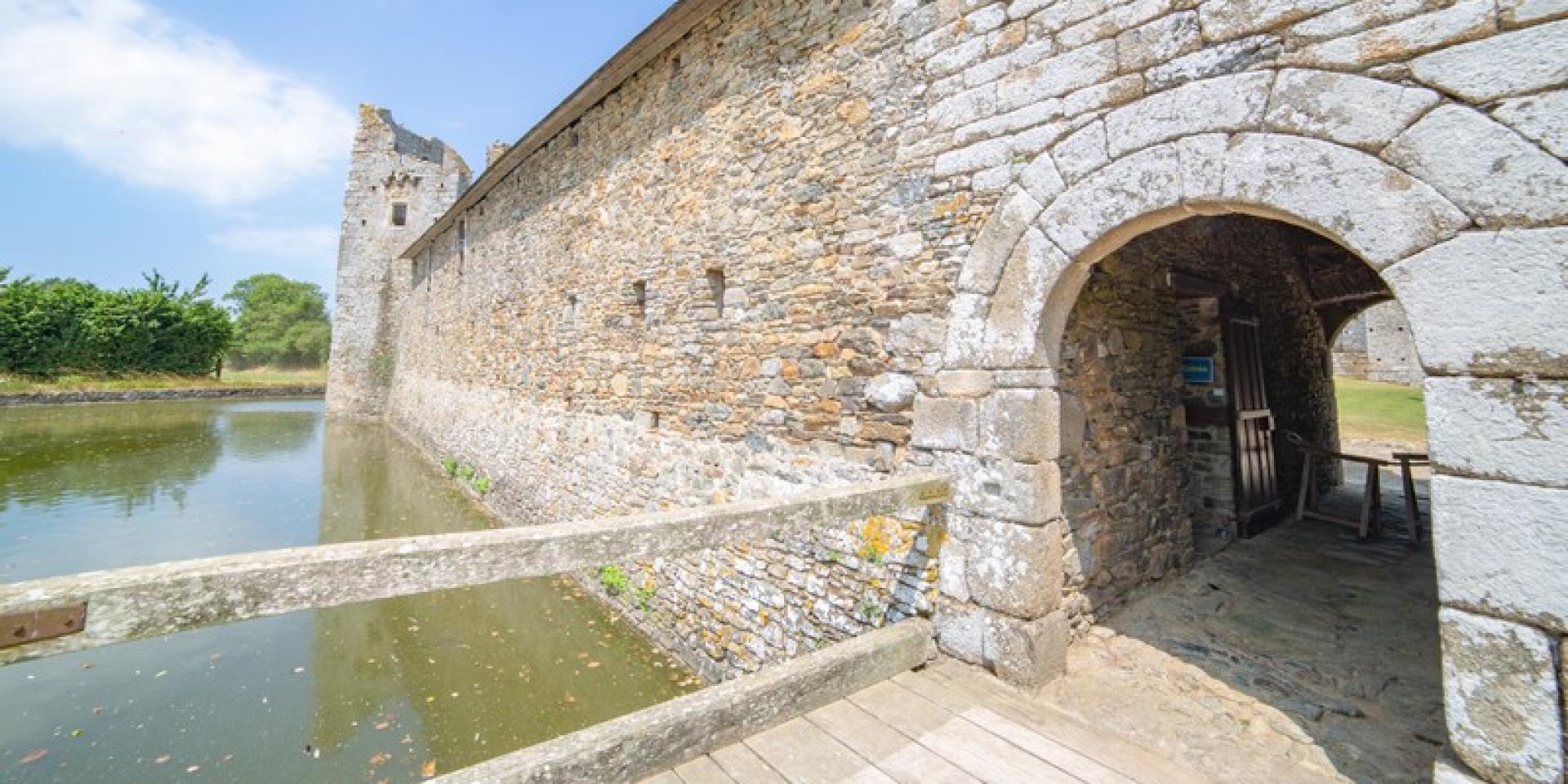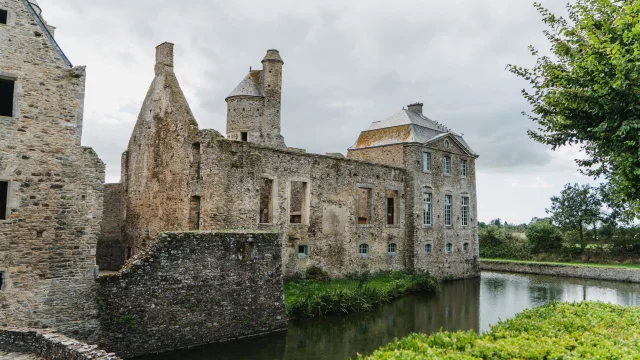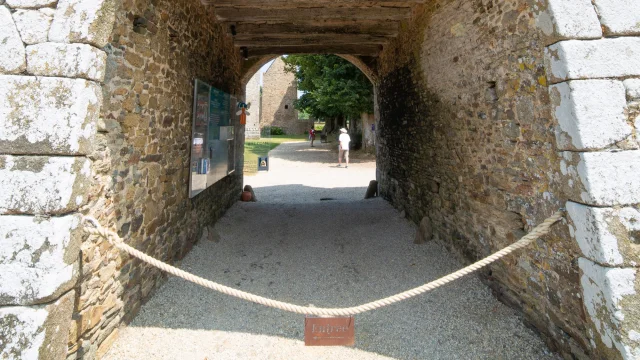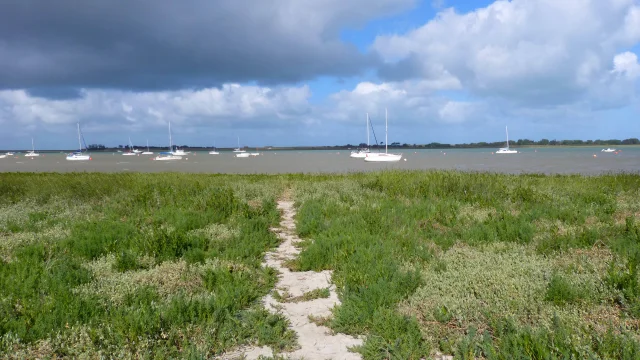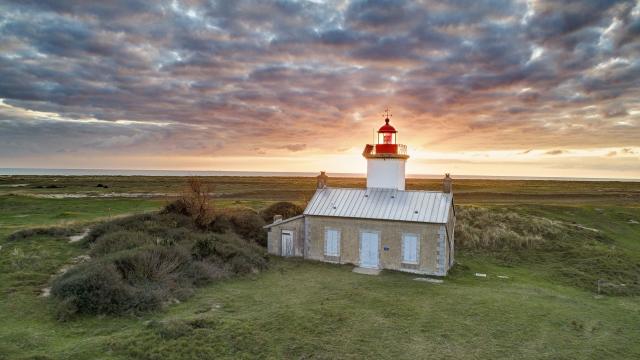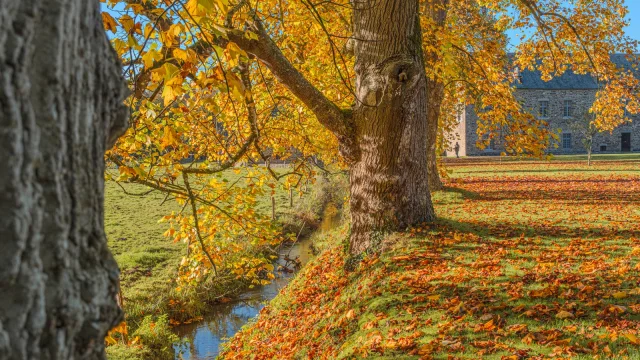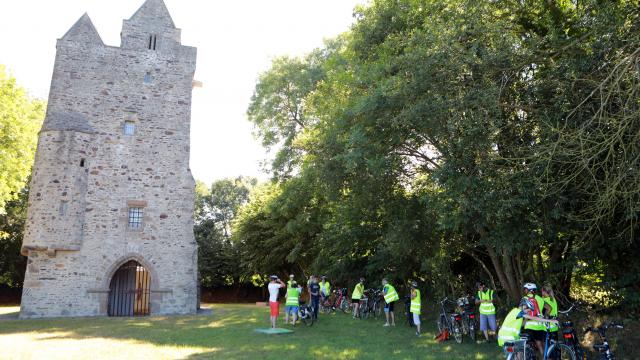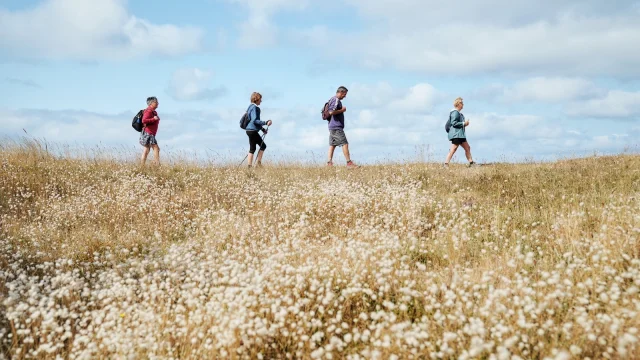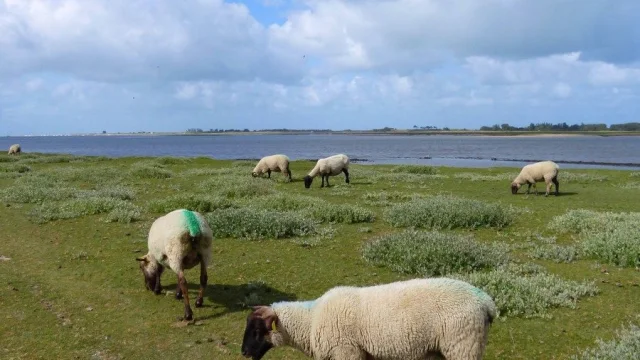Presentation
Château de Gratot was built at the end of the 13th century and altered many times over the years. It was abandoned at the beginning of the 20th century, and its remains can still be seen today.
It is located in the commune of Gratot in the coutançais region, close to Notre-Dame church, in the heart of La Manche.
The château consists of a quadrangular enclosure surrounded by a moat fed by the “Fountain of the Fairy”. The entrance was via a postern equipped with drawbridges. A 13th-century corner tower and an arched bridge leading to a formal garden are still visible. The 16th-century outbuildings now house an exhibition on the history of the château. The seigniorial dwelling, built in the 15th and 17th centuries, comprised three floors and some 15 rooms.
The medieval-looking Tour Ronde features a watch turret, while the Tour à la Fée is distinguished by its ornate architecture. An 18th-century inventory reveals the splendor of the château, with its vast storerooms and fifteen servants. A local legend tells of an underground passage linking it to the Saint-Gerbold hermitage.
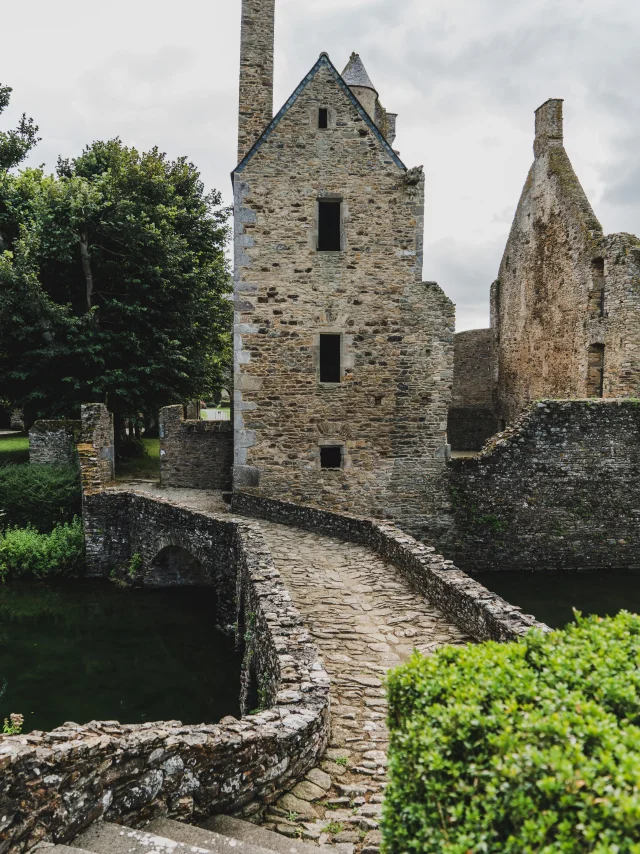 A winding stone path leads to medieval stone ruins. The ruins include a central tower with a pointed roof and partially collapsed stone walls. Water surrounds the ruins, and green trees and bushes are visible in the background. The sky is cloudy, creating a mysterious atmosphere.
A winding stone path leads to medieval stone ruins. The ruins include a central tower with a pointed roof and partially collapsed stone walls. Water surrounds the ruins, and green trees and bushes are visible in the background. The sky is cloudy, creating a mysterious atmosphere.